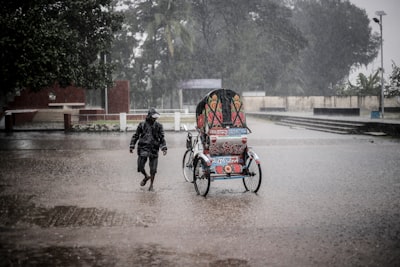Abstract
This article examines the phenomenon of sudden weather changes in Delhi, characterized by strong winds and rainfall across multiple regions, as reported by local media and monitored by the Indian Meteorological Department (IMD). By defining key meteorological concepts and analyzing the implications, the article situates this event within scientific, historical, and social frameworks, exploring underlying causes and broader impacts.
Background or Context
Delhi, the national capital of India, experiences a diverse climate shaped by its geographical position, urbanization, and ongoing transformations in global weather patterns. 'Sudden weather change' typically refers to short-term, unexpected shifts in conditions such as temperature, wind, and precipitation.
The IMD, or Indian Meteorological Department, is India's premier agency for weather forecasting and warning dissemination. Its updates are crucial for public safety and resource management, especially in urban agglomerations like Delhi, which is vulnerable to both natural and anthropogenic weather influences.
Analysis and Discussion
Key Concepts and Actions
The main subjects are Delhi's urban regions, weather systems, and the IMD. The key actions involve the abrupt change in weather—specifically, the onset of strong storms (आंधी, or 'andhi') and rainfall.
Broader Scientific Context
Sudden meteorological events can be attributed to dynamic interactions between atmospheric pressures, temperature gradients, and moisture-laden winds. In the context of Delhi, such transitions often occur when pre-monsoon or monsoon troughs interact with localized heat islands created by urbanization (Oke, 1982).
Causes
Primary causes of sudden weather shifts include:
- Advancing western disturbances—a meteorological phenomenon involving extra-tropical storms originating from the Mediterranean region that affects the Indian subcontinent (Dimri et al., 2015).
- Rapid surface heating, intensified by urban infrastructure, which increases convection potential.
- Synoptic-scale systems such as cyclonic circulations or low-pressure areas.
Recent studies (Sharma & Ghosh, 2022) suggest that anthropogenic climate change further intensifies the frequency and unpredictability of such weather changes in urban India.
Effects and Implications
Social and Economic
Abrupt weather events affect public transportation, infrastructure, health, and livelihoods, disproportionately impacting vulnerable populations. Power outages, traffic congestion, and waterlogging are common secondary consequences.
Scientific and Governance
The reliance on IMD updates underscores the importance of timely, accurate meteorological information. Advanced warning facilitates mitigation strategies but also poses challenges in communication and public trust, especially when predictions are abrupt or highly localized.
Historical Precedents
Such events are not new to Delhi; historical records show recurrent pre-monsoon squalls and thunderstorms, but urban growth and climate variability may be heightening their intensity (Gupta, 2005).
Conclusion
Sudden weather changes in Delhi, as captured in the referenced headline, illuminate complex meteorological, infrastructural, and socio-political dynamics. They underscore the need for robust urban planning, resilient infrastructure, and adaptive meteorological services. Future research could focus on refining predictive models and enhancing community-based early warning systems to mitigate associated risks.
This article was inspired by the headline: 'दिल्ली में अचानक बदला मौसम, कई इलाकों में तेज आंधी और बारिश, IMD का क्या अपडेट - Hindustan'.

Comments
No comments yet. Be the first to comment!